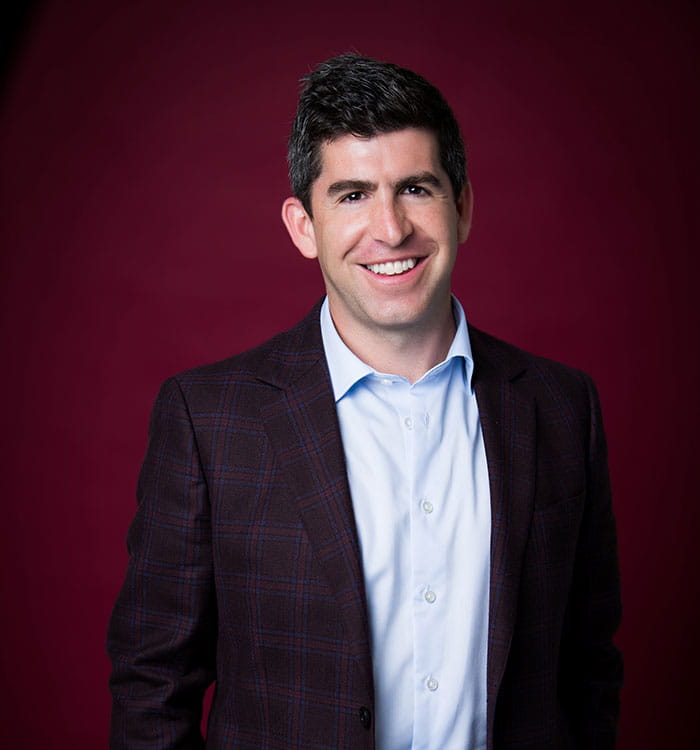Technology Offers Option for Men with Refractory Overactive Bladder
March 12, 2024
Innovations in Urology | Spring 2024
For men with persistent overactive bladder symptoms, sacral neuromodulation (SNS), also called sacral nerve stimulation, may provide relief. Clinicians have used this therapy for years to treat overactive bladder, mostly in women, and now urologists are now utilizing it for men, as well.
 Aram Loeb, MD
Aram Loeb, MDAt University Hospitals, Aram Loeb, MD, Chief, Urology, UH Ahuja Medical Center, is working with Axonics to incorporate neuromodulation therapy into clinical practice that focuses on men’s health.
“As urologists, we are really good at treating problems related to the outlet,” says Dr. Loeb. “However, some men continue to have bothersome urinary symptoms despite therapy. We’ve started using Axonics’ neuromodulation device, which is fairly new, to treat men. Fortunately, we have years of data about safety and effectiveness in women, and we’re finding similar results in men.”
Old Therapy, New Opportunities
The newer iterations of neuromodulation devices are more user friendly for both patients and clinicians, and the device UH is using is the first one that is MRI-compatible, a significant shortcoming with earlier devices. It is comfortable for patients and has a longer battery life than previous models had.
Potential candidates for this device are men with refractory overactive bladder symptoms who haven’t responded to conservative therapies, such as lifestyle changes. Second-line therapies include anticholinergic medications, which tend to have disruptive side effects, and Beta-3 adrenergic agonists, which are expensive and therefore not readily accessible to some men who would benefit from them.
The neuromodulation device uses low-frequency current to alter how the sacral nerve carries signals to the bladder to hold and release urine.
“One of the great things about using neuromodulation with men is that we can trial it before making it permanent,” says Dr. Loeb. “In the office, we conduct a peripheral nerve evaluation. The patient lies on their stomach, and with a local numbing agent, we place two tiny leads attached to an external device into the S3 nerve space. It takes about 10 to 15 minutes, and the patient can walk out the door and drive home.
“We ask patients to keep a diary for a week to determine if they have less urgency, frequency and leaking. If the trial is successful — a 50 percent improvement over baseline — then we place a permanent lead and pulse generator/battery under sedation.”
Patients have the choice of a device with a rechargeable battery or one with a battery that may last for more than 20 years. Once home, patients can adjust the settings as needed with the support of their clinician and manufacturer representatives.
“We’ve just started promoting this option in men and we’re getting busy quickly,” says Dr. Loeb. “Urologists historically haven’t considered neuromodulation in this space. It’s not suitable for every patient, of course, but it may be a good option for those who don’t benefit from other therapies.”
Looking Ahead
About 30 to 36 percent of men live with overactive bladder symptoms, and the severity of symptoms typically increases with age, so the potential for improving the quality of life for men, and for reducing the economic impact of this condition, is significant. Dr. Loeb is excited about collaborating with his colleagues at other institutions and with Axonics to collect neuromodulation data with male patients and better determine how to best fit this therapy into clinical practice.
“UH is early in the game using neuromodulation to treat male patients with persistent overactive bladder. It is rewarding to be able to offer patients who have bothersome symptoms a solution beyond medications,” he says. “I’m looking forward to UH participating in new clinical trials and acquiring more data to support this therapy.”
For more information about neuromodulation in treating overactive bladder, call Dr. Loeb at 440-887-9139.
Contributing Expert:
Aram Loeb, MD,
Chief, Urology, UH Ahuja Medical Center
Assistant Professor
Case Western Reserve University School of Medicine


